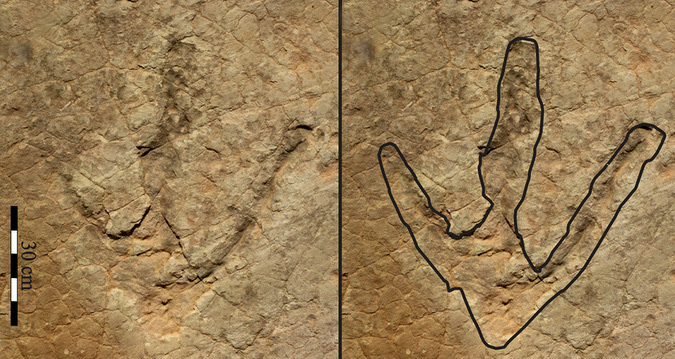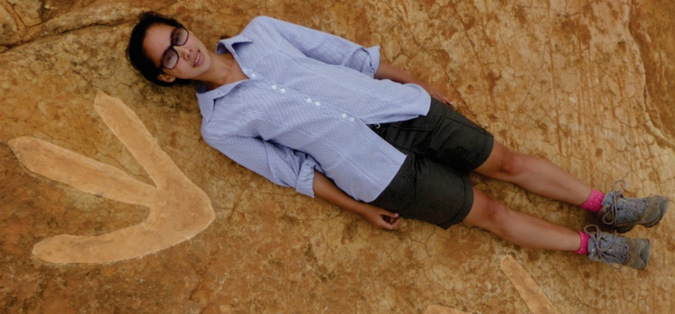
An international team of researchers from South Africa, the UK, and Brazil have discovered massive footprints belonging to a carnivorous dinosaur that roamed Southern Africa 200 million years ago.
In a paper published last week on PLOS One, the dinosaur has been classified informally as a ‘megatheropod’, and is called Kayentapus ambrokholohali – thought to be a relative of the Tyrannosaurus rex.

Led by scientists from the University of Cape Town (UCT), the team discovered the footprints in western Lesotho. The footprints measure 57cm long and 50cm wide.
With these measurements, the team believes the dinosaur was at least nine metres long and had a hip height of almost three metres, making this the largest therapod tracks during this time period ever found in Africa .

According to the statement released by UCT, around the time that this dinosaur roamed the earth (early Jurassic period), the other carnivores (therapods) were “usually small” and were only around three to five metres in body length.
This means that this megatheropod “would have roamed a landscape otherwise dominated by much smaller carnivorous dinosaurs and a variety of herbivorous and omnivorous dinosaurs”. The statement adds that because large forms of theropods only started to appear about 120 million years later – during the Late Jurassic period – that this new discovery of this megatheropod is more “scientifically impactful”.

The full report: PLOS ONE, L. Sciscio, E. M. Bordy, M. Abrahams, F. Knoll, B. W. McPhee: “The first megatheropod tracks from the Lower Jurassic upper Elliot Formation, Karoo Basin, Lesotho”
To comment on this story: Login (or sign up) to our app here - it's a troll-free safe place 🙂.![]()






